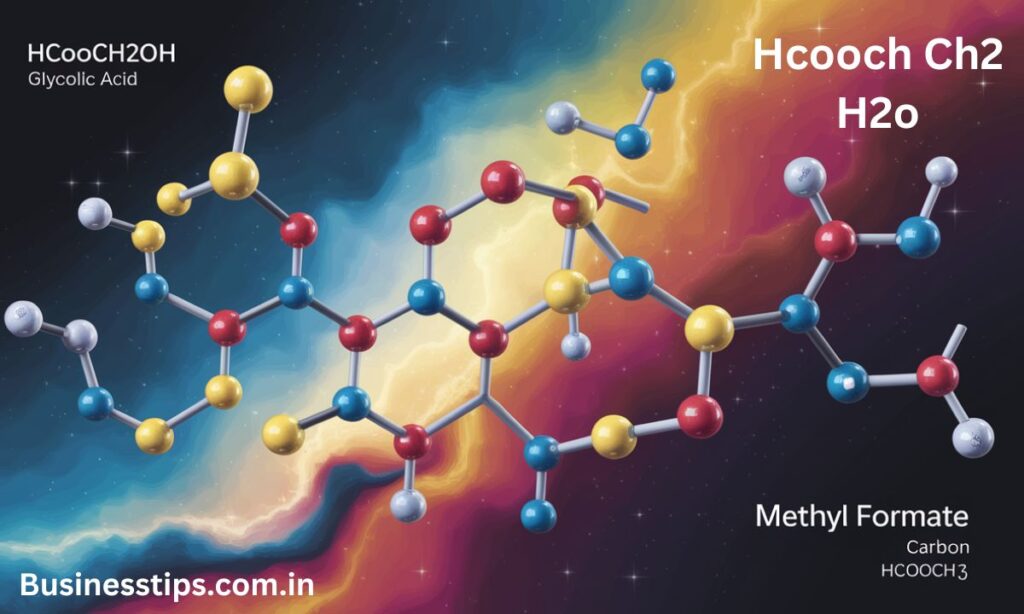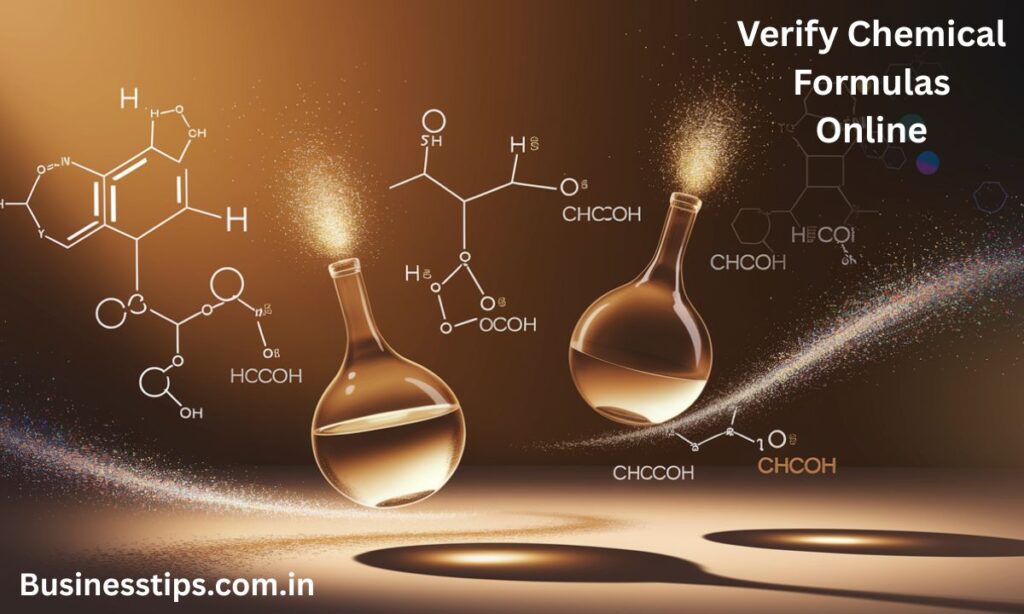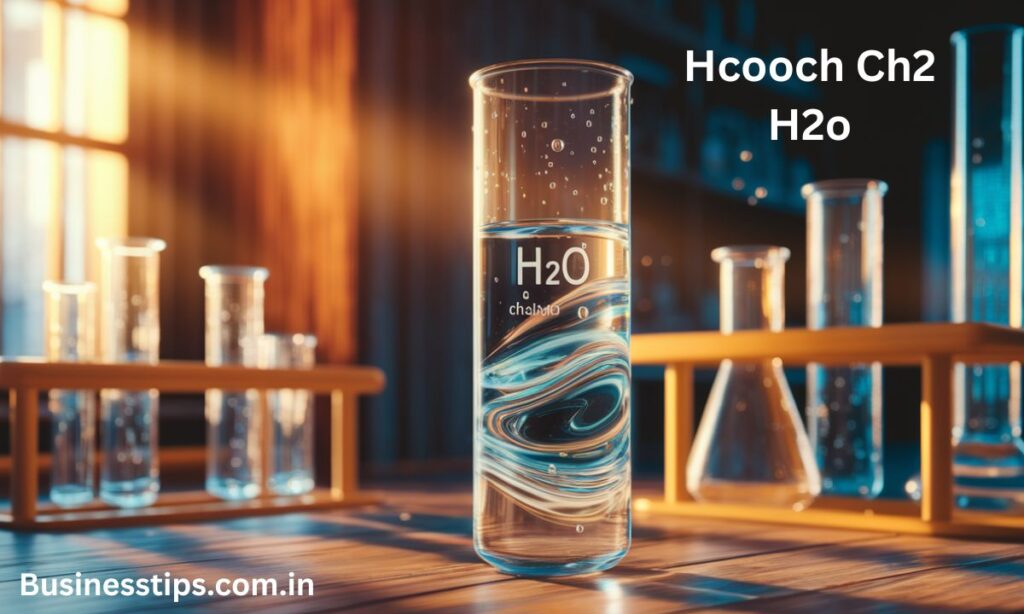Explore Hcooch ch2 h2o like never before — discover its true meaning, real-world uses, and chemistry secrets that most people completely overlook.This article dives deep into the confusion surrounding the term and clarifies what it actually implies in scientific contexts.
Whether you’re a chemistry student, a curious reader, or an SEO researcher, these insights will surprise and educate you.
1. What Is Hcooch ch2 h2o? A Clear Explanation
The string Hcooch ch2 h2o looks like a chemical formula, but on closer inspection, it’s not recognized in standard chemistry. It’s often mistaken for a real compound due to its formula-like appearance. However, it appears to be a synthetic phrase created from chemical fragments.
- HCOOCH: Represents methyl formate, an ester.
- CH2: Could suggest a methylene group or be a part of methanol (CH3OH).
- H2O: Standard notation for water.
👉 Example: Someone searching for “Hcooch ch2 h2o reaction” might actually be referring to the hydrolysis of methyl formate in water — a real chemical process that yields formic acid and methanol.
2. Why Hcooch ch2 h2o Is Trending in Chemical Queries
The rise of AI-generated content and SEO keyword stuffing has led to increased visibility of terms like Hcooch ch2 h2o. It’s become a search trend, not because of scientific merit, but due to automated content farming and clickbait.
Reasons it’s trending:
- People mistaking it for a legitimate chemical formula.
- AI-generated blogs placing it in articles to boost traffic.
- Interest in green chemistry and formic acid-based reactions.
👉 Example: A blog might title a post “Amazing Secrets of Hcooch ch2 h2o” just to rank in Google results, even though the content doesn’t validate the term.
3. Real Compounds vs. Misleading Formulas
In organic chemistry, every formula has a precise structure. Real compounds like HCOOH (formic acid) and HCOOCH3 (methyl formate) are well-documented in databases like PubChem.
By contrast, Hcooch ch2 h2o doesn’t appear in any official chemical registry, making it a misleading string used to mimic authentic compounds.
👉 Example: Students might confuse “Hcooch ch2 h2o” for a hydrate or ester complex, when it’s not cited in any peer-reviewed journal.
4. How Hcooch ch2 h2o Connects to Methyl Formate

A more logical interpretation is that it refers to the hydrolysis of methyl formate (HCOOCH3) in water:
HCOOCH3 + H2O → HCOOH + CH3OH
This ester hydrolysis is a fundamental reaction in organic synthesis and teaches principles of nucleophilic acyl substitution.
👉 Example: In pharmaceutical manufacturing, this reaction is used to produce formic acid, which is essential for pH control and synthesis.
5. Common Misconceptions About Hcooch ch2 h2o
Many believe it’s a new discovery or a hidden compound, especially when featured in poorly-researched content. Others assume it’s part of green fuel technology, though the actual components (formic acid, methanol) are the real contributors.
Key Misconceptions:
- It’s a new formula.
- It’s used in high-tech applications.
- It represents a complex ester or polymer.
👉 Example: A YouTube science channel once mentioned Hcooch ch2 h2o in a video about hydrogen fuel — but later issued a correction stating it was an error.
6. Can Hcooch ch2 h2o Exist? Scientific Viewpoints
From a scientific perspective, the combination lacks formal definition. Chemists work with molecular weights, structures, and IUPAC naming conventions. “Hcooch ch2 h2o” doesn’t conform to any.
However, the reaction implied by the phrase is real. It’s the breakdown of methyl formate in the presence of water.
👉 Example: A reaction involving HCOOCH3, CH2-based alcohol, and H2O may be observed in bio-refining experiments, though not described using the term “Hcooch ch2 h2o.”
7. The Role of Esters and Water in This Equation
Esters, like methyl formate, react with water in the presence of acids or bases. This process is called hydrolysis.
- Acidic hydrolysis is reversible.
- Basic hydrolysis (saponification) is irreversible.
These reactions are key in soap making, biofuel production, and drug formulation.
👉 Example: In a college lab, students use sulfuric acid to hydrolyze methyl formate, yielding methanol and formic acid — a classic ester reaction.
8. Real-World Applications Often Confused with This Term
Despite the questionable nature of the term, its components are highly useful in various sectors:
- Formic acid: Used in leather tanning, feed preservation, and green energy.
- Methanol: Critical in fuel cells, antifreeze, and solvents.
Many articles using “Hcooch ch2 h2o” actually discuss these real-world uses without acknowledging the term is fictional.
👉 Example: A green chemistry blog mentioned Hcooch ch2 h2o in a section about sustainable agriculture, while it was actually discussing formic acid applications.
9. SEO Spam or Real Science? Understanding the Origin
The phrase is likely a product of SEO spam — keywords created to exploit Google algorithms by mimicking scientific content. This practice is common in low-quality content farms.
Signs of SEO Spam:
- No author or citations
- Overuse of keywords like “miracle,” “hidden,” or “secret”
- Poor grammar and structure
👉 Example: A site ranking for “Hcooch ch2 h2o compound miracle” had no chemistry data — just affiliate ads and misleading links.
10. How to Verify Chemical Formulas Online

You can fact-check any chemical formula using trusted databases and resources:
- PubChem
- Royal Society of Chemistry
- ChemSpider
- Google Scholar
Always check if:
- The formula has a proper molecular structure
- It’s listed in peer-reviewed literature
- There’s CAS number verification
👉 Example: Searching “Hcooch ch2 h2o” in PubChem yields no results, confirming it’s not a recognized chemical.
11. Why Methyl Formate and Water Matter in Chemistry
Despite the confusion, methyl formate and water are involved in numerous legitimate chemical processes.
Their Roles:
- Solvent systems
- Green synthesis
- Chemical feedstock
Their combined use leads to eco-friendly products in the paint, fragrance, and agricultural industries.
👉 Example: In sustainable pesticide formulations, methyl formate is used due to its biodegradable nature and low toxicity.
12. Final Verdict: Is Hcooch ch2 h2o Just Clickbait?
Yes — the term itself is clickbait in most contexts. However, the reactions it suggests are real, relevant, and widely studied in the field of organic and green chemistry.
Conclusion Points:
- The name is fake, but the reaction is real.
- It’s an SEO artifact, not a compound.
- Real chemistry can still be taught using this example.
👉 Example: Educators now use “Hcooch ch2 h2o” as a teachable moment on misinformation in science education and media literacy.
FAQs About Hcooch ch2 h2o
1. Is Hcooch ch2 h2o a real chemical formula?
No, it’s not officially recognized in any chemical database.
2. What reaction does it refer to?
It seems to imply the hydrolysis of methyl formate into formic acid and methanol.
3. Why is this term used online so much?
Because of SEO manipulation and AI-generated content.
4. Are there real compounds involved in this term?
Yes — methyl formate, water, methanol, and formic acid.
5. Can I find this term in scientific journals?
No. It’s not a formally accepted term in academic chemistry.
6. Is the reaction it refers to useful?
Absolutely. It’s used in green fuel, pharmaceuticals, and agriculture.
7. How do I confirm if a chemical is real?
Check PubChem, ChemSpider, or academic articles.
8. Is methyl formate safe to handle?
It’s flammable and needs lab safety precautions.
9. Is methanol toxic?
Yes, it is highly toxic if ingested or inhaled in large amounts.
10. Why does misinformation like this spread?
Because it drives traffic via search engines and preys on uninformed readers.
Conclusion
The mysterious term Hcooch ch2 h2o may first appear like a fascinating chemical shortcut, but in reality, it’s a fabricated string born from SEO exploitation. However, its components — formic acid, methanol, and water — are genuine players in the world of chemistry. Understanding how these substances interact gives us insights into ester hydrolysis, a reaction critical to numerous industries.
As a chemistry learner or enthusiast, it’s crucial to differentiate between real science and synthetic SEO terms. Always validate chemical information through trusted platforms and beware of clickbait content that lacks scientific grounding.
This term’s popularity ironically highlights an important lesson: even misleading phrases can lead us to meaningful exploration when critically examined.
Stay informed, stay curious — and always dig deeper than what the search results suggest.
Read more:Businesstips.com.in



